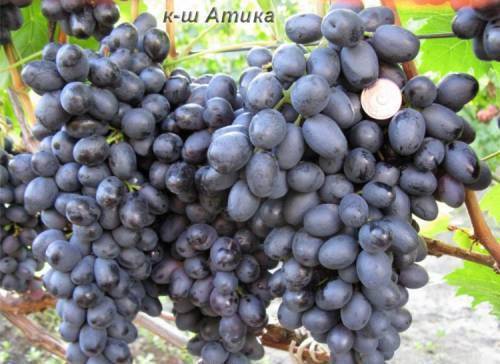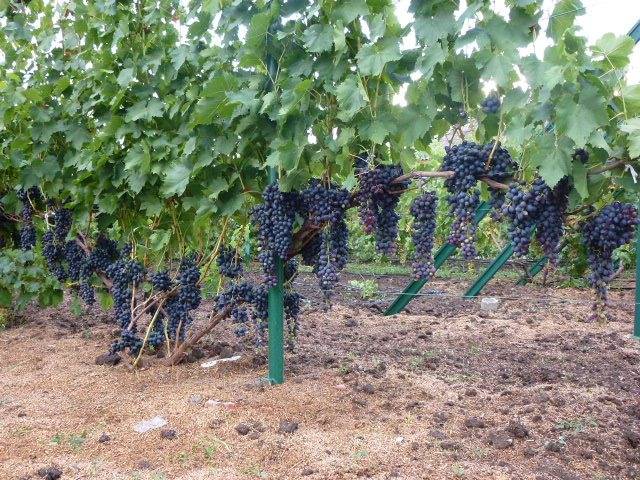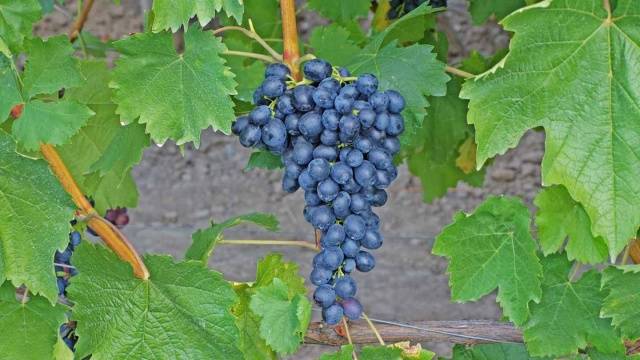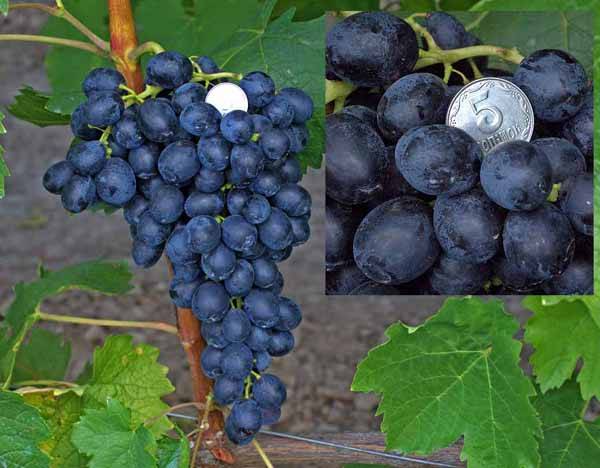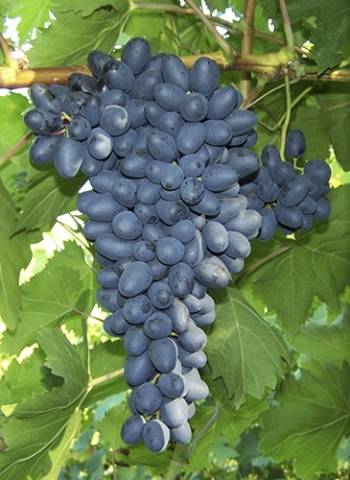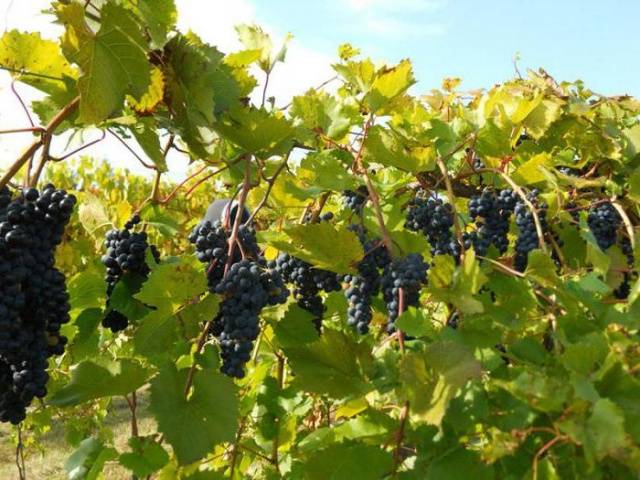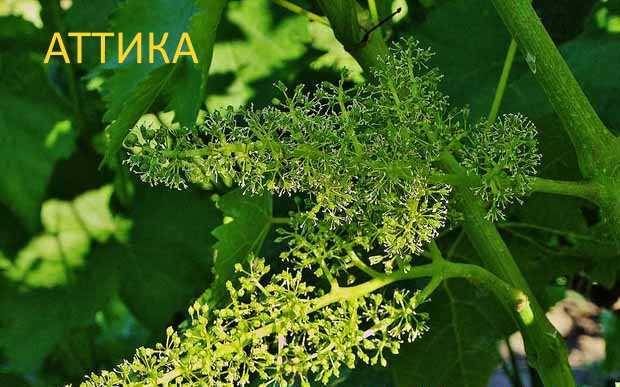Content
Seedless grape varieties or raisins will always be in special demand among gardeners, because these berries are more versatile in use. You can make grape juice from them without any problems, without suffering from removing the seeds. Such berries can be given to children of even the smallest age without fear and, finally, they are ideal for making homemade raisins - one of the healthiest and most delicious natural delicacies.
The Attica grape, a description of the variety and a photo of which you can find in this article, is precisely a representative of the seedless group. Since this grape variety came to us from abroad, then one of its English names speaks of the same fact - Attika seedless, that is, seedless attic.
Description and history of the variety
The very name of the grape variety speaks volumes about its origin. Attica is one of the regions of central Greece, and in her honor the Greek scientist breeder V. Michos named the hybrid form of grapes he received back in 1979. In order for the Attica grapes to be born, Mikhos needed to cross between each other Black Kishmish (an ancient variety of Central Asian origin) and Alphonse Lavalle (a French variety). The result is a kind of transnational hybrid of grapes, which, despite its rather southern origin, may well grow and ripen even in the weather conditions of central Russia, of course, under shelters.
Bushes of this grape form have an above average vigor. It is encouraging that young vines have time to ripen along their entire length in a relatively short time. This allows the grapes to withstand frost well, although the overall frost resistance of the variety, expressed primarily in the minimum temperature the fruit buds withstand without shelter, is not too high - they are able to withstand, according to various sources, from -19 ° C to -23 ° FROM.
The positive thing about the cultivation of Attica grapes is that the cuttings of this variety take root quite easily. Judging by the reviews, even one hundred percent rooting is possible under favorable conditions. It also grows well with rootstocks, so it can be easily grafted onto more frost-resistant rootstocks.
Weakly dissected grape leaves can be either three- or five-lobed. They have a rich green hue, the upper surface of the leaf blade is matte, naked, coarsely wrinkled, the lower one is pubescent.
Flowers in Attica are bisexual, which means that grapes can be used in single plantings or during the initial laying of a vineyard. He does not need a pollinator to fully set the berries.
Traditionally, Attica grapes belong to medium early varieties in terms of ripening, that is, from budding on a bush to full ripeness of berries, on average, 115-120 days pass. In the middle lane, the ripening of berries will occur at the very end of August - September. In the south, grapes can ripen even faster - already at the end of July - the first half of August. Much depends on the weather conditions - in hot summers, Attica grapes may show super-early ripening times, but in cool conditions, the harvest may have to wait much longer.
The grapes are well preserved on the bushes and, when ripe, can hang until the very frost, without especially losing their presentation.
The grapes begin to yield in the second year after planting. In the third year, about 5 kg of berries can be harvested from one bush. Mature bushes of Attica are known for very good yields - up to 30 tons per hectare. One adult bush will allow you to collect an average of about 15-20 kg of berries.
Attica grapes show good resistance to gray rot, average resistance to other common fungal diseases of grapes. In addition to the mandatory prophylactic spraying, it is possible to advise not to thicken the bushes, remove stepchildren in a timely manner, ensuring good ventilation. When grape bushes thicken, the likelihood of spreading diseases increases.
Characteristics of berries and bunches
The grapes of Attica raisins differs from ordinary raisins in a good full size of berries. True, the growers noticed the following feature - if the berries grow especially large, up to 6-7 grams, then they usually contain the so-called rudimentary seed formations. The average size of the grapes of this variety is 4-5 grams.
- Bunches of Attica grapes have a complex conical-cylindrical shape with many branches.
- Usually, the berries are not located close to each other inside the bunches, but rather dense bunches can also be found.
- The size of the bunches is quite large - they easily reach 30 cm or more in length.
- The average weight of one bunch ranges from 700 to 900 grams. But sometimes there are also champions weighing up to 2 kg.
- The berries have a good attachment to the stalk, so the grapes can hang on the bushes without spoiling for a long time.
- The berries themselves are distinguished by an oval, often elongated shape. A distinctive feature of this variety is the presence of small dimples at the end of each grape.
- The approximate dimensions of the berry are 25x19 mm.
- The flesh is firm and crispy. Do not forget that it becomes so only after some exposure of the bunches on the bushes. In the first week after the grapes are completely colored, the pulp can be slimy and rather tasteless.
- The skin is quite dense, you can even call it thick, but it has no astringent properties, it is covered with a noticeable waxy bloom.
- The berries are dark purple in color.
- The taste of Attica grapes is quite interesting, sweet, has some fruity notes of cherry, mulberry or chokeberry.
- Berry sugars gain in the range from 16 to 19 Brix, acidity - about 5%.
- The variety belongs to table grape varieties, although it is also sometimes used for wine.
- Attica is well preserved, under normal conditions - up to several weeks. When stored for a long time, it can only dry out slightly, but rot is not formed.
- The transportability of Attica grapes is also at a high level.
The video below demonstrates all the main characteristics of the Attica grape.
Growing features
Attica grape bushes are not picky about soils, they can grow on almost all soils, except for saline or waterlogged ones. Makes increased demands on heat and sunlight, as befits a true Greek by origin.
Attica has some tendency to overload the crop, so the inflorescences after their formation must be normalized, leaving a maximum of two for the shoot. Short pruning (2-3 eyes) is more suitable for the southern regions, and in the middle lane it is better to carry out medium pruning (5-6 eyes). About 30 eyes can be left on one grape bush.
The advantage of this variety is good pollination and fruit set. In principle, treatment with gibberellin (growth promoter) is not even required. Although it is sometimes used to increase the size of berries and grapes.
In order to prevent diseases, the Attica grape bushes need two or three times treatment with fungicides: after bud break, shortly before flowering and immediately after flowering.
Gardeners reviews
Reviews of those who planted Attica grapes on their site are mostly positive. Some discrepancies in the taste of the berries are connected, apparently, with their premature tasting, when they did not have time to gain the taste and consistency they were supposed to.
Conclusion
Perhaps due to its foreign or southern origin, Attica grapes are not as popular in Russia as other varieties. But, this hybrid form is capable of surprising with its stability, yield, and taste. So whoever tries to allocate a place for her on the site is unlikely to be disappointed.
